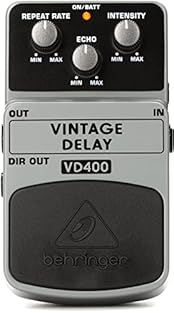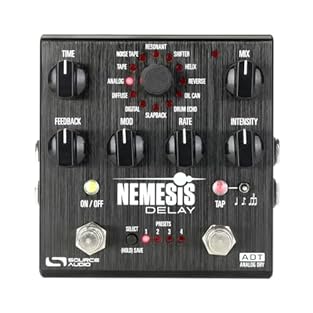Description
Source Guitar Pedals are fresh in, this is a New one & the Just Pedals team think it is very tasty indeed!. Good news ! This can be delivered straight to your door, quickly and securely, anywhere in the UK & Europe. For more info on this New Guitar Pedals, please read on for full details, demos, videos, reviews and order online.
Widely lauded for their sensational stompbox engineering, Source Audio are among the titans of the digital guitar FX world. Now they’ve combined algorithms from two of their most popular pedals – the Nemesis Delay and Ventris Dual Reverb – to create a compact ambient powerhouse. Introducing the Collider!
Key features
- Stereo Inputs & Outputs
- Two completely independent processors
- Analog Dry Through
- Universal Bypass
- Compact Design
- 128 Preset slots
- Dual Delay or Reverb Control Set with the Neuro Mobile App and Neuro Desktop Editor
- Tap Tempo
- Reverb “Hold” Mode for endless ambient reverb tails
- Knobs “Lock” Switch to prevent unwanted parameter changes
- Complete MIDI Functionally
- Expression Control
Here’s what Source Audio say:
Design complex soundscapes in seconds with the Collider Delay + Reverb. We hand-picked 12 standout delay and reverb effects from our award winning Nemesis Delay and Ventris Dual Reverb, and put them together in one compact housing with massive power and dead simple control. The Collider’s intuitive control surface makes it easy to mix-and-match any two-engine combination of delay and reverb. Dual footswitches provide individual Engage/Bypass control over each effect, making it a perfect choice for live performance.
The Collider offers an exceptional collection of rich, spacious tones, including realistic reproductions of vintage Analog, Tape, and Oil Can Delays, classic models of Spring and Plate Reverb, natural replications of large and small acoustic spaces, and an intriguing and highly musical selection of “unnatural” tones including a tripped-out Reverse Delay and other-worldly Shimmer Reverb.
Specifications
- Includes 9v DC power supply (300mA / Negative Tip)
- Includes 1/8” to 1/4” cable for Neuro Mobile App connection.
- Power Consumption — 200mA
- USB port — Connects to Mac or Windows PC for MIDI control of firmware updates.
- Brushed anodized aluminium housing.
- Dimensions: L: 4.5 in./11.4cm x W: 4.5 in./11.4cm x H: 2 in./5.1cm (including knobs)
- Weight: 1 lb/0.45 kg







![☑️[2-in-1 Pedal] The 2-in-1 Revecho pedal seamlessly integrates meticulously chosen delay and reverb effects, offering musicians a powerful combination of tonal possibilities in a single, compact pedal. ☑️[Instant Precision Control] Adjustable effect...](https://m.media-amazon.com/images/I/4163vKreonL._SL313_.jpg)



